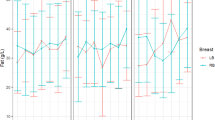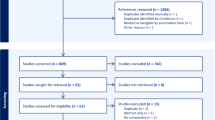Abstract
Human milk (HM) contains numerous non-nutritive bioactive factors, amongst which the peptide hormone insulin. HM insulin has been suggested to accelerate intestinal maturation, thereby promoting feeding tolerance. Therefore, recombinant human insulin for enteral administration has been developed which might serve as supplement to HM or formula for preterm infants. However, the natural course of the HM insulin concentration directly following delivery is unknown, which hampers the development of dosage schedules in clinical trials. The aim of this study was to validate a method for insulin determination in small volumes of HM, and to assess the stability of HM insulin. The results showed that the HM insulin concentration can be measured rapidly and reliably by using an automated immunoassay. In addition, HM insulin is stable at 4 °C for at least 72 h, at room temperature for a maximum of 12 h, at −20 °C for at least 2.5 years, and during at least five freeze-thaw cycles.
This is a preview of subscription content, access via your institution
Access options
Subscribe to this journal
Receive 12 print issues and online access
$259.00 per year
only $21.58 per issue
Buy this article
- Purchase on Springer Link
- Instant access to full article PDF
Prices may be subject to local taxes which are calculated during checkout

Similar content being viewed by others
References
Gila-Diaz A, Arribas SM, Algara A, Martín-Cabrejas MA, López de Pablo ÁL, Sáenz de Pipaón, et al. A review of bioactive factors in human breastmilk: a focus on prematurity. Nutrients 2019;11:1307.
Shamir R, Shehadeh N. Insulin in human milk and the use of hormones in infant formulas. Nestle Nutr Inst Workshop Ser. 2013;77:57–64.
Kulski JK, Hartmann PE. Milk insulin, GH and TSH: relationship to changes in milk lactose, glucose and protein during lactogenesis in women. Endocrinol Exp. 1983;17:317–26.
Read LC, Upton FM, Francis GL, Wallace JC, Dahlenberg GW, Ballard FJ. Changes in the growth-promoting activity of human milk during lactation. Pediatr Res. 1984;18:133–9.
Shulman RJ. Effect of enteral administration of insulin on intestinal development and feeding tolerance in preterm infants: a pilot study. Arch Dis Child Fetal Neonatal Ed. 2002;86:131–3.
Lemas DJ, Young BE, Baker PR, Tomczik AC, Soderborg TK, Hernandez TL, et al. Alterations in human milk leptin and insulin are associated with early changes in the infant intestinal microbiome. Am J Clin Nutr. 2016;103:1291–300.
Young BE, Patinkin Z, Palmer C, de la Houssaye B, Barbour LA, Hernandez T, et al. Human milk insulin is related to maternal plasma insulin and BMI: but other components of human milk do not differ by BMI. Eur J Clin Nutr. 2017;71:1094–100.
Yu X, Rong SS, Sun X, Ding G, Wan W, Zou L, et al. Associations of breast milk adiponectin, leptin, insulin and ghrelin with maternal characteristics and early infant growth: a longitudinal study. Br J Nutr. 2018;120:1380–7.
Grunewald M, Hellmuth C, Kirchberg FF, Mearin ML, Auricchio R, Castillejo G, et al. Variation and interdependencies of human milk macronutrients, fatty acids, adiponectin, insulin, and IGF-II in the European PreventCD Cohort. Nutrients 2019;11:2034.
Sadr Dadres G, Whitaker KM, Haapala JL, Foster L, Smith KD, Teague AM, et al. Relationship of maternal weight status before, during, and after pregnancy with breast milk hormone concentrations. Obesity 2019;27:621–8.
Acknowledgements
We thank the study participants for their contribution to the study. We also thank the technicians of the Endocrine Laboratory of the department of Clinical Chemistry for performing the insulin measurements.
Author information
Authors and Affiliations
Contributions
EN: study concept and design, acquisition, analysis, and interpretation of the data, drafting the manuscript. EM: study concept and design, interpretation of the data, revision of the manuscript. CvdA: study concept and design, interpretation of the data, revision of the manuscript. AH: study concept and design, acquisition, analysis, and interpretation of the data, revision of the manuscript.
Corresponding author
Ethics declarations
Conflict of interest
The authors declare that they have no conflict of interest.
Additional information
Publisher’s note Springer Nature remains neutral with regard to jurisdictional claims in published maps and institutional affiliations.
Rights and permissions
About this article
Cite this article
Mank, E., Naninck, E.F.G., van den Akker, C.H.P. et al. Rapid quantification of insulin in human milk by immunoassay. Eur J Clin Nutr 75, 1152–1154 (2021). https://doi.org/10.1038/s41430-020-00832-y
Received:
Revised:
Accepted:
Published:
Issue Date:
DOI: https://doi.org/10.1038/s41430-020-00832-y



